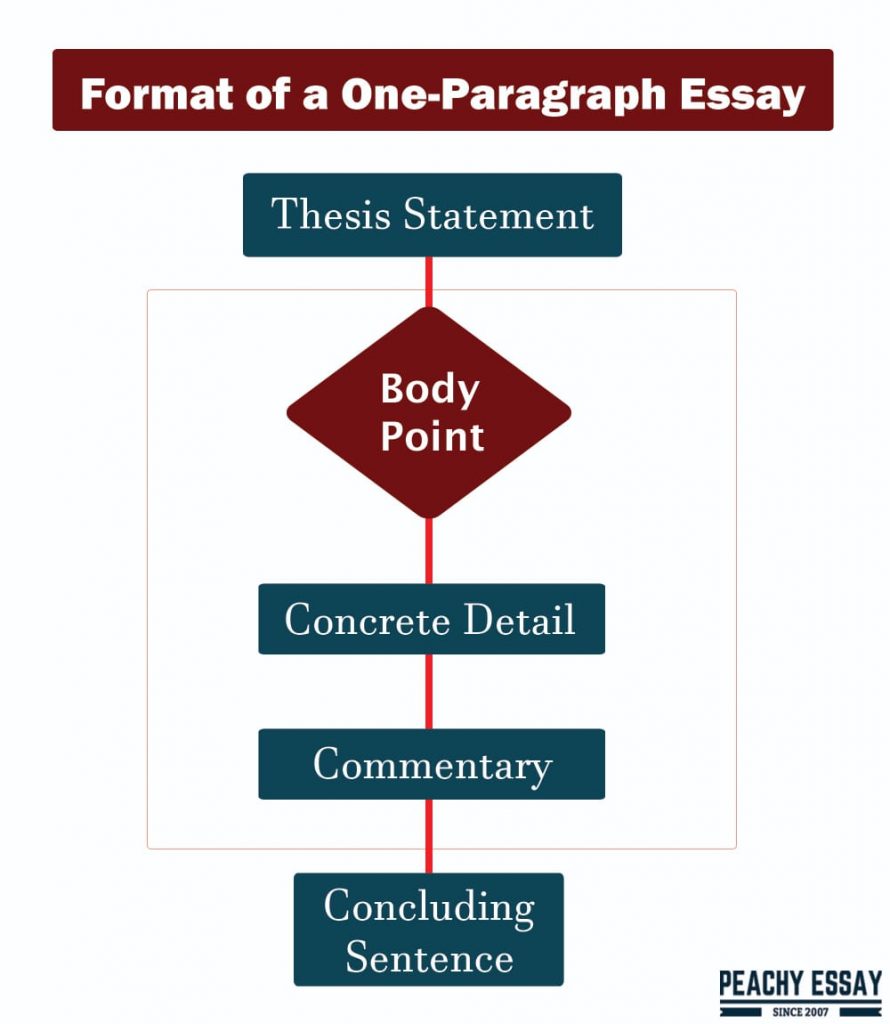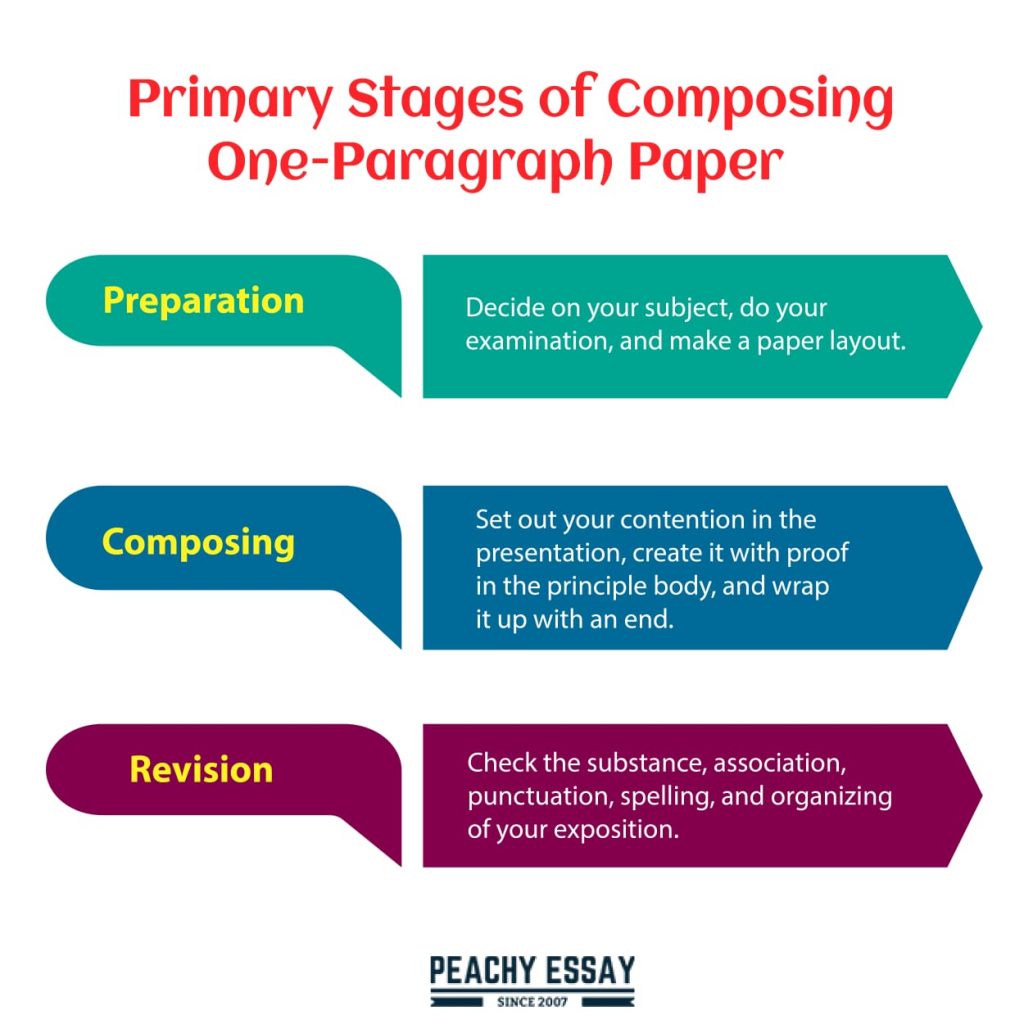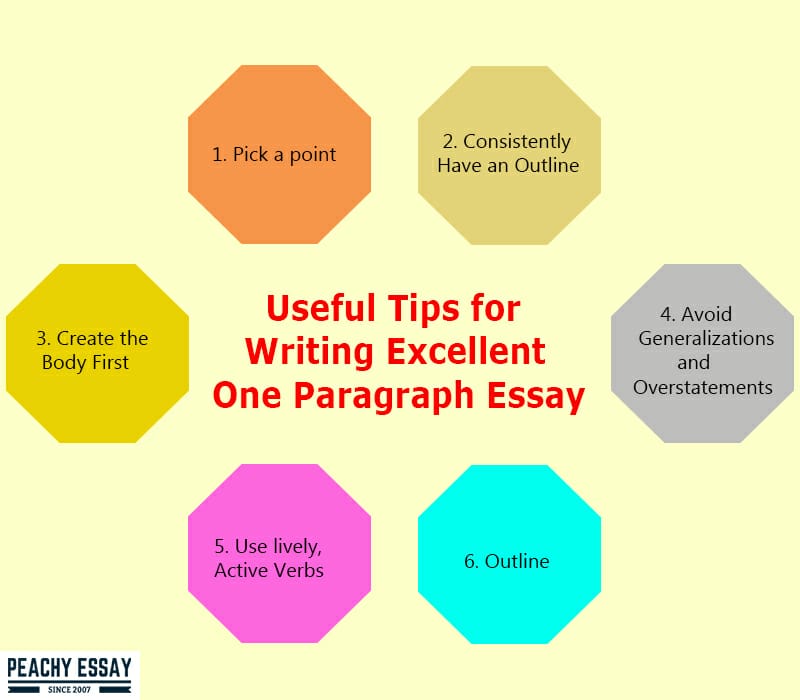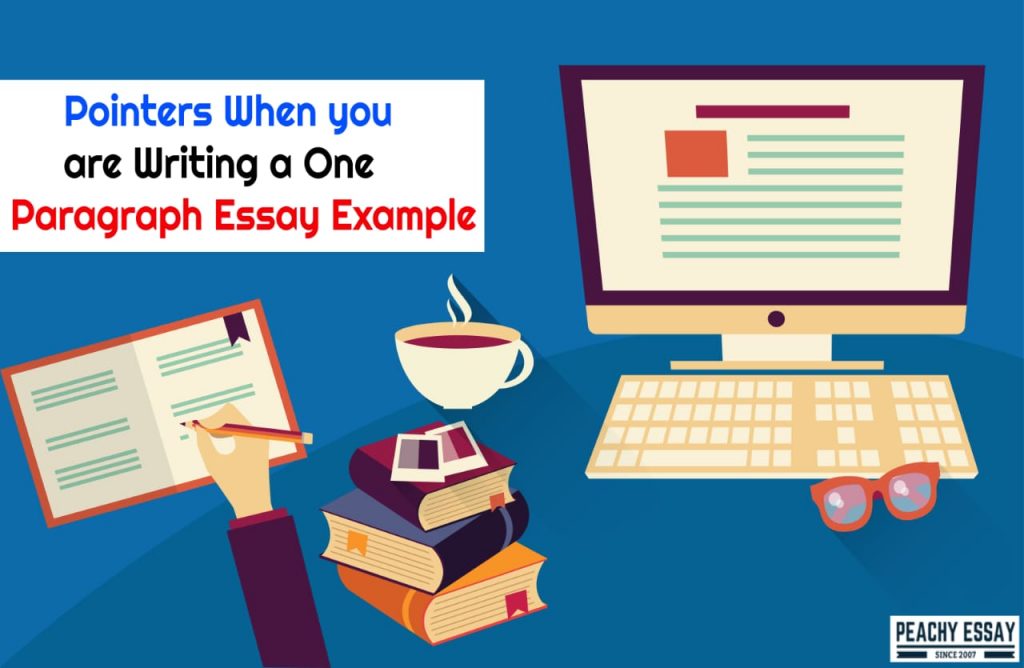Most individuals are not used to crafting short papers, such as one paragraph essay. Composing a one-paragraph paper example can be a difficult errand. This is due to the fact that an individual may feel like they need more space to introduce a convincing contention. Encountering a work that expects you to compose a one-passage paper model is very uncommon. Accordingly, not many individuals know about how to approach such an article.
A one-paragraph paper should be short and directly forthright since there is no space for the optional substance. During the organization of a short piece, something crucial should be followed. An author needs to recollect that only the most crucial data will assist with supporting one’s point that ought to be included in the piece being referred to.
How to Write a One Paragraph Essay Regarding a Variety of Topics
Figuring out how to compose a one-passage exposition isn’t an intricate process if an author sticks to the paper design regarding the arrangement of the article. Moreover, one paragraph article topics that you compose will, in general, be different and are regularly reliant upon the necessities of the paper.
It is significant to note that the ordinary one-paragraph paper outline requires the author to apply sufficient proof to help each point. Also, the utilization of words, for example, after, first, next, etc., is urged regarding figuring out how to compose a one-section exposition. The use of these words guarantees that an appropriate one passage exposition outline has been clung to, bringing about the structure of an outstandingly elegantly composed paper.
To acquire a superior comprehension of how to compose your expositions, it is crucial to recollect that utilization of an appropriate one-paragraph paper design ensures that the readers of the article can shift rapidly and conveniently. The shifting happens from the starting piece of the paper into the principle body that contains all the applicable data regarding the subject to the end. Composing such a paper makes it simpler for readers to follow the creator’s progression of thought concerning the subject.
Creating a one-section article that is not difficult to peruse lessens the strain that a reader may have. It additionally gives the readers the boost to go through the whole paper since they will appreciate the perusing if it is well written. One of the principal reasons why they won’t follow a one-section exposition design is because the author neglects to apply enough contentions to help the point they are attempting to demonstrate.
As an author, you should zero in your endeavors on itemizing just the vital data for the one passage exposition subjects you are working on. It is prudent to choose the words to utilize cautiously since the legitimate one-section article design doesn’t offer a lot of room for pointless substance.
One-Paragraph Essay Format
The fundamental one passage article outline incorporates a thesis, the topic sentence, and the supporting proof to back up the author’s cases, lastly, the conclusion. When creating the thesis for a one-passage paper, it is fundamental to recollect that the proposition ought to be in the primary sentence since the article doesn’t have a ton of room. As is confirmed by the various one-section exposition tests found on the Internet, the proposition ought to be dazzling and exact so that the reader can be snared to the structure consistently.
Ensure that the subject being tended to in the composing doesn’t need an excessive amount of space to intricate, given that the one passage paper outline has less space than normal expositions do. The topic sentence which follows the thesis in the one-paragraph paper outline should hand off the fundamental contention of the exposition.
For instance, in a one-passage article about smoking and its impacts on the human body, the writer should feature the different destructive impacts of smoking not long after making the postulation out of the paper. It is profoundly important to ensure that you have exhibited the premise of the contention in the passage straight away.
Given the short idea of a one-paragraph article layout, one should ensure that the primary contention of the exposition isn’t introduced toward the finish of the paragraph or, for this situation, the paper.
The following stage in the one passage article layout gives data that will uphold the primary contention introduced in the initial articulation. This segment of the creation is viewed as the body of the section. The author should ensure that the person has applied solid proof to back up any introduced claims.
For instance, assuming the author is creating a one-paragraph paper about affection, the individual in question should ensure the perspective about adoration is offered and the verification to discover that the cases are given. The content of the body sentence of the one passage article layout, as a rule, relies upon the thesis that was at first introduced, and it ought to contain at least one of the accompanying:
Factual proof and information to help the principle contention
Instances of realities or happenings that back up the thesis
Conversations about the reason and impacts
Insights about occasions, individuals, and spots that apply to the paper
The overall framework of a system or cycle
Concluding papers of anyone paragraph essay topics
Regarding composing a one-paragraph exposition diagram, one should end the passage with a fitting summary of the content that was spread out in the remainder of the article. Additionally, it is important to remember that the end ought to persuade the readers about the exactness of your proposal explanation. One ought to likewise be mindful so as not to put in the end a few explanations that are not part of the principal contention.
Format of a one-paragraph paper
A one-paragraph exposition is the pith of a body paragraph with a proper thesis statement toward the start and a concluding statement toward the end. When composing a solitary section paper, leave out the overall data used to set up your proposition in the Presentation and leave out the re-postulation and implications ordinarily utilized in a closing section. A single-passage paper is amazingly compact, a reduced adaptation of a full scholarly exposition; nonetheless, this doesn’t imply that an essayist can forego the utilization of solid subtleties and critique.
Here is a format of a one-paragraph essay.

- Thesis statement – Start your exposition with a thesis statement that contains your position and a TAG. Express a situation on a theme that can be demonstrated in the section. Ensure the subject is adequately thin to be upheld by two realities (solid subtleties with discourse).
- Body Point: In a full exposition, this would be the topic sentence in each body section. In a solitary section article, it is a significant point you make to demonstrate the thesis straightforwardly. In any case (full exposition or single-section article), this sentence straightforwardly upholds your proposal and guides to reader’s focus toward the particular proof you use in solid detail.
- Concrete detail (#1): Use a particular example from work used to prove your topic sentence or help your thesis. This comes directly from the content you are referring to. A solid detail can be a mix of rewording and direct citation from the work. It would help if you gave an incidental reference to the solid detail. After your sentence, compose the first author’s name and the page/pages where you procured the content; this acknowledges the sources used.
- Commentary – This is your clarification and translation of the solid detail. In this sentence, you clarify, in your own words, what the content (CD) means or how the concrete detail demonstrates/upholds the theory. This assertion may incorporate translation, knowledge, examination, contention, or reflection. In your section, you ought to have twice as much commentary as concrete detail.
- Commentary 1: Comments on the significance of the concrete detail.
- Commentary2: Can remark on the articulation in critique 1 by offering a changing/contradicting thought or give an alternate commentary about the significance of the solid detail.
- Concluding Sentence– – This sentence wraps up the passage. It straightforwardly identifies with the thesis statement but doesn’t rehash it. This is the chance to come to your meaningful conclusion and “drive it home.” Do not leave the reader asking, “So what?” DO NOT present any new facts in this sentence. This sentence is utilized to take care of the potential issues and ensure that the section feels wrapped up.
Note that you need at least two concrete subtleties, and for each solid detail, you ought to have two critiques. In this manner, your section will be 10-14 sentences long, contingent on whether you have two or three solid subtleties.
The one-paragraph paper composing measure comprises of three primary stages:
The creative cycle of planning, composing, and updates apply to each exposition or paper; however, the time and exertion spent on each stage rely upon the kind of article.

Preparation for Writing an Essay
Before you begin composing, you should ensure you have an unmistakable thought of what you need to say and how you will say it. There are a couple of key advances you can follow to ensure you’re readied:
- Comprehend your task: What is the objective of this exposition? What is the length and cutoff time of the task? Is there anything you need to explain to your instructor or educator?
- Characterize a topic: If you’re permitted to pick your own subject, attempt to pick something that you definitely know somewhat about, and that will hold your advantage.
- Do your research: Read essential and optional sources and take notes to help you work out your position and point on the theme. You’ll utilize these as proof for your focuses.
- Think of a thesis: The thesis is the main issue or contention that you need to make. A reasonable proposal is fundamental for an engaging article—you should continue to allude back to it as you compose.
- Make an outline: Map out the rough structure of your paper in an outline. This makes it simpler to begin composing and keeps you on target as you go.
Whenever you have a reasonable thought of what you need to talk about, in what order, and what proof you’ll utilize, you’re prepared to begin composing.
Tips for Writing a Great One Paragraph Essay
Use words like first, by then, after, next, finally, and so on, to lead the reader from your underlying thesis through the proof in the body of the paper and on to the undeniable outcome that you are progressing. It should be simple for your reader to follow your line of thinking.
Regularly, a one-paragraph piece is unfit in light of the fact that the author fails to give satisfactory confirmation. In light of everything, they may use an enormous number of modifiers, intensifiers, and other “filler” language as opposed to zeroing in on what makes a difference and confirmation that maintains her position. Be conservative, and pick your words circumspectly while making a one-paragraph piece. It is a short piece, and you have neither time nor words to waste!

Pick a point
You may have your point named, or you may be given a free guideline to create with respect to your favored matter. In the event that you are given the subject, you ought to consider such a paper you need to make. Would it be fitting for it to be a general framework of the subject or a specific assessment? Finally, survey your decisions. If you will likely instruct, pick a subject that you have adequately analyzed. In the event that you will probably persuade, pick a subject that you are eager about. Whatever the mission of the article, ensure that you are excited about your subject.
Consistently Have an Outline
Various understudies think that making an outline is just a pointless activity. Nevertheless, trust us, it’s unquestionably not! A low-down chart is convenient during the creating stage. It helps with keeping your paper productive and ensures that you don’t miss any critical core interests. Additionally, when you have a specific course of action of what ought to be associated with each segment, by then, it will require some speculation to form the whole paper.
Create the Body First
Another cool tip that should help you handle any paper is the body entries, introduction, and conclusion. The issue is that understudies oftentimes have no idea about how to start their papers. Independently, they slow down with an unmistakable piece of paper, endeavoring to consider a couple of considerations.
This tip helps with avoiding this. Since the body areas of each paper are frequently reliant upon veritable disputes and real factors, you may have numerous contemplations for them successfully after the groundwork assessment. Why not start with those and move to the hardest parts later? Over the long haul, when you have your body paragraphs, creating an introduction and a conclusion will be significantly simpler!
Avoid generalizations and overstatements
If you need to protect an evaluation reasonably, don’t leave yourself open to mock by offering precarious clearing articulations. “People who smoke cigarettes are nitwits” or “There’s nothing valuable on TV today” are unreasonably strong and wide. They are thusly easy to uncover by sensible people. Qualify your clarifications when crucial and state appraisals can be reasonably shielded. “The opposite effects of cigarette smoking are different so much that smart people ought to reevaluate before outlining the inclination” or “television programming these days offers little of huge worth” are strong alternatives that can be reasonably ensured.
Use lively, active verbs
Activity words power your making as the engine pulls along a train. Strong, striking, unique activity words inject quickly required vitality into article making. We will, by and large, limit inventive activity word assurance to exploratory composition — account and illuminating pieces. However, activity word choice is vital for all structures. Populate your sentences with unmistakable, energetic activity words. Breaking point “be” activity words and avoid uninvolved improvements with the exception of on the off chance that they are principal. Zero in on activity words and watch how your composing awakens.
Outline
Try not to support points that are only clear and powerful contemplations. Don’t just specify to the reader his assessment. Show them, tell tales, and paint pictures. Back your proposition with brilliant, strong portrayals. Do whatever it takes not to say that military families do unprecedented atonements. Relate the story of a partner who lost his kin to a side of the street bomb in Iraq. Do whatever it takes not to discuss fortitude; show someone being gallant. Never leave your considerations in the hypothetical. Address your considerations with certified, concrete, undeniable pictures.




